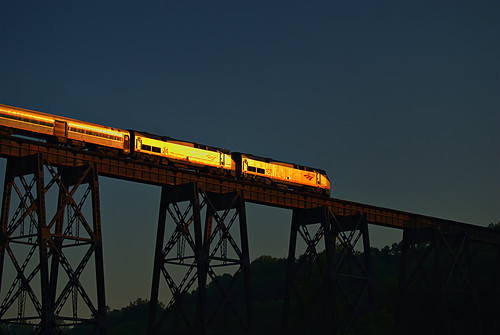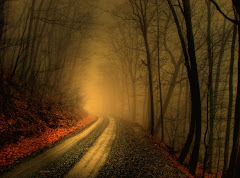
Photo Taken with a 55-200mm Nikon vr lens.
F Stop maybe the singular least understood term in photography. And when I have even talked to some accomplished photographers their eyes have glazed over at the mere mention of the term.
What makes F Stop hard to grasp to many is that the higher the F Stop the less light enters the lens.
Now, if that is not confusing enough the term F stop is loosely used as a measure in ISO and shutter speed.
1. The Video: To grasp all of this may seem daunting, but I hope by the time you reach the end of this post you will have a firm basic understanding. Lets start with this short video that will visually give you a quick jump start on the concept of F Stop.
2. A little more depth: Well, the video gives you a quick overview of what F Stop is. And you see how they are using F stops in the understanding of shutter speed and ISO.
To be more technically correct they should just be saying stops.
The official definition of F Stop is:
In optics, the f-number (sometimes called focal ratio, f-ratio, or relative aperture) of an optical system expresses the diameter of the entrance pupil in terms of the focal length of the lens; in simpler terms, the f-number is the focal length divided by the "effective" aperture diameter.
What this amounts to for the photographer is a number on the scale which tells how much light is allowed to come in through the lens.
This is controlled either by a ring on the lens or through camera settings. It really works like your eye. The iris will contract or get larger to expose the pupil to more light.
In a photographic lens these are like leaves that make the opening for light smaller or larger. Just remember the higher the F number the smaller the hole.
(Aperture also controls dof or depth of field which is entirely another concept which deserves a post of its own).
3. Lets check our understanding: We now know that F Stop is a number that shows how much light is let in the lens by an iris diaphragm getting larger or smaller. This is true F Stop.
Larger numbers mean a smaller opening, smaller numbers mean a larger opening. We also know that Stops are also used in relation with ISO and shutter speed.
Stops are in reality is just a short hand word so one photographer can tell another "I can get another stop out of this lens." Another photographer would understand this to mean this lens can use less light and still get a good shot.
4. All things work together: In most modern cameras the user will see on the camera dial at least these settings: A S .
For our purposes in this post, these are the only two settings we will discuss.
A means aperture setting. When the photographer uses this setting he is controlling the iris diaphragm of the lens, the camera with its on board computer controls shutter speed and tries to adjust for the best picture.
Aperture settings I have found useful in fine tuning the contrast of an image and controlling DOF (Depth of Field).
The lower the F Stop the narrower the dof.
Depth of field is the amount of distance between the nearest and farthest objects that appear in acceptably sharp focus.
S means shutter setting: The length of time the shutter is open the more light is let into the camera.
The camera computer controls everything else to get the best picture. Using the S setting you can try to eek out the fastest speed to capture action, or the slowest speed for pictures in low light.
A lens with a small number for a F Stop can use less available light to get a good picture. It is considered a faster lens for this reason.
By faster it means that you can shoot at a higher shutter speed and still get a good picture. And the camera will acquire focus quicker.
This is because most auto focus systems use points of contrast to auto focus on. If you are using a lens on the edge of its ability with available light: Contrast is harder for focus system to detect.
5. A general rule: The longer the lens the more available light is needed. The best long lenses have "Big Glass" and can be stepped down to a low F Stop. This is the ideal, but it is very expensive. It also requires a tripod (or a monopod) to keep that heavy glass steady.
6. Exceptions to the general rule: With both lens technology improvements, camera improvements and noise reduction software improvements: There are some lenses that can get great images even though they do not have that low F Stop number.
They offer a lower cost opportunity to get good images from lenses. And can be hand held with great results.
Digital cameras are also improving in handling higher ISOs. The ability of a camera to take good images at higher ISO's is arguable more important than mega pixels in camera selection.
I highly recommend the Nikon 55-200mm vr lens that I get consistently great shots and it is one of the least expensive Nikon lenses. It is quick, works great in fairly low light conditions and it produces high quality images. The image at the start of this post was taken with this lens.
And, I have been impressed with the shots photographers are getting with the Sigma 150-500 HSM lens. Even at 500mm this lens produces shots with exceptional detail.
These two lenses are great examples of how technology met the challenge of producing superb lenses at a reasonable cost.
7. F Stop as a measurement in ISO and Shutter Speed: We saw in the video how F Stop can be communicated in terms of ISO.
This is more or less is a measurement factor and should be explained as gaining or losing a stop rather than a F Stop to be more technically correct. First lets understand what ISO is:
ISO equivalence on a digital camera is the ability to increase the sensitivity of the sensor to enable faster shutter speeds and/or better performance in low light.
One Stop according to the video would be increasing the ISO from 100 to 200.
So you would gain one stop in this scenario. Since 200 ISO requires more sensor sensitivity you would be stopping down.
Likewise if you increase the time the shutter is open you would also be stopping down.
8. Other Factors: So by now you are getting things a little firmer in understanding the term stop in photography.
One stop is a measurement tool of a change in settings, and one stop equals twice as much light as the previous stop.
Another tool a photographer uses are neutral density filters that block the amount of light coming in the camera.
To get that silky texture of waterfalls many photographers prefer a slower shutter speed and the filter allows the photographer to accomplish this without blowing out the picture highlights. Other uses are controlling depth of field.
9. Buying lenses: Perhaps one of the best uses of the knowledge of F Stop is evaluating the lenses you buy. If a camera has an F Stop number in the low range. You know it will be a great performer.
10. Watch the Video again: Just to reinforce what you learned here, I highly recommend you watch the video again. I think you will understand with a greater depth of this somewhat hard concept to grasp.






No comments:
Post a Comment